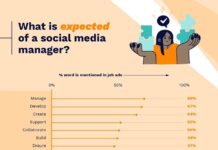NPR recently decided to try a new social media tactic to drive traffic to one of its local stations: customizing Facebook posts by location. In a case study recently covered on NPR’s Digital Services blog, NPR’s 2.3 million Facebook fans became part of this geotargeted experiment. Back in October 2011, NPR’s Facebook page began sharing relevant stories from member station KPLU in Seattle. These posts — visible only to fans in the Seattle area — led to record traffic on KPLU’s website.
How did NPR weave the KPLU content into their regular news posts on Facebook, and how did Facebook fans interact with these targeted local stories? The experiment is still ongoing, but NPR’s Eric Athas and Keith Hopper decided to take a look at how the targeting worked, and what effects it had on KPLU’s audience numbers and engagement after the first four months.
How did NPR geotarget posts effectively for their Facebook audience?
NPR has Facebook fans in thousands of cities, but decided to experiment with customizing Facebook posts for just one city. The news media outlet worked closely with Seattle’s KPLU on a daily basis to choose the right story to post to NPR’s Facebook fans in the Seattle area. Each story had to pass “the content coffee shop test:” meaning the content had to “raise curiosity” and have the right “splash of local flavor” that would “be talked about in a Seattle coffee shop.”
Seattle-based NPR fans on Facebook might have noticed an increased volume of Seattle-oriented stories, with links to KPLU.org, while NPR fans living outside of Seattle would never see these posts. However, the number of stories increased only slightly – up to one per day – in an effort to maintain the “steady cadence” of regular posts from NPR, generally one per hour throughout the day.
How did the NPR posts affect KPLU’s audience numbers and engagement?
NPR chose to measure audience growth from the experiment through campaign tracking, by attaching a unique tag onto the end of each KPLU link posted to NPR’s Facebook page. In the first four months, NPR’s Facebook page posted ~50 geotargeted links to KPLU.org (just a small piece of all KPLU content), and those posts accounted for 12% of all visits to KPLU’s site over that time period. While NPR expected the targeted posts create a temporary rise in KPLU traffic, the level of response was more impressive than anticipated — KPLU traffic hit three milestones within that four month period:
- record traffic for a single day (January 19)
- second-highest traffic for a single month (October 2011)
- highest traffic for a single month (January 2012)
User engagement – how NPR Facebook fans reacted to these local stories vs. globally shared posts – was measured using Facebook Insights. While the “flurry” of likes, shares and comments from NPR Facebook users following a post is obviously greater for global stories (seen by a much larger audience), in this case NPR looked at each post’s engagement rate, or the “number of likes, shares and comments on a Facebook post as a percentage of the number of unique people who viewed it.”
The results? NPR’s team found that “geofocused posts to the Seattle region usually had a much higher engagement rate than links shared to the global NPR Facebook audience.” More Facebook fans (relative to the total audience viewing each post) were engaging with the local content.
Athas and Hopper believe that so far, “no other news organization has used Facebook to geofocus content in quite this way.” The careful selection (and discreet volume) of “conversation-style” local posts led to a significant boost in traffic and – more surprisingly – to consistently higher engagement rates than global posts. Will other major news organizations start following suit?


